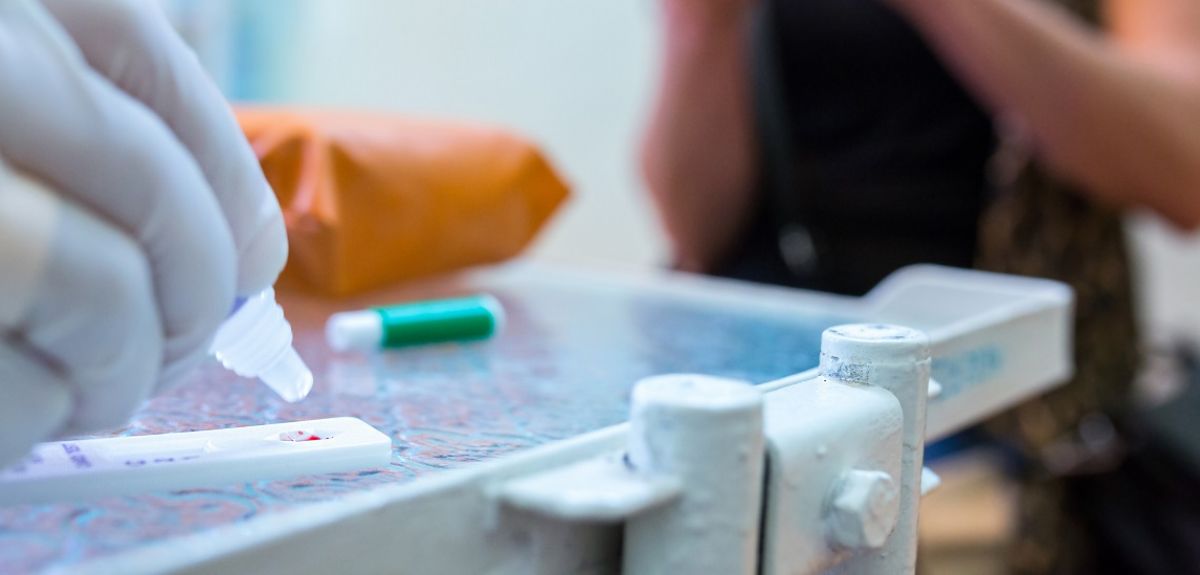
Credit: Shutterstock
Oxford University and PHE confirm lateral flow tests show high specificity and are effective at identifying most individuals who are infectious
Extensive clinical evaluation from Public Health England and the University of Oxford show Lateral Flow Tests are accurate and sensitive enough to be used in the community, including for asymptomatic people.
Lateral Flow Tests are rapid turnaround tests that can process COVID-19 samples on site without the need for laboratory equipment, with most generating results in under half an hour.
These new tests are being piloted across England, including a two-week whole-city pilot in Liverpool, which was launched last week.
The swabbing and processing of these tests must currently be conducted at a dedicated testing site by a trained personnel.
The devices are designed to be intuitive and require minimal training to operate, and PHE and the University of Oxford are now looking at how this test could be self-administered.
PHE’s Porton Down lab and University of Oxford undertook this work and have since been putting a number of tests through a four-phase assessment process. This includes the test being used in Liverpool, and those that are being sent to Directors of Public Health across the country to use for their local communities, and are also being used in schools, universities and workplace settings.
Forty different lateral flow devices were put forward, of which nine met the criteria to continue to full evaluation. Six made it to the third phase, and the Innova SARS-CoV-2 Antigen Rapid Qualitative Test, the test being used in the Liverpool pilot, is nearing completion of the four-stage process.
PHE Porton Down’s labs have shown four lateral flow tests to have a sensitivity of more than 70% of all PCR positive cases but importantly catch all those with high viral loads, meaning they are effective in identifying the cases who are infectious and are most likely to transmit the disease. The fast turnaround also allows positive people to isolate quickly also reducing spread.
The evaluation published today concludes that the Innova, and other tests which meet PHE and Oxford’s standards, should be used in asymptomatic, as they offer the advantage of reducing risk and increasing capacity in addition to Lighthouse and NHS labs.
The results of the Innova evaluation published today show:
- The specificity of the test was recorded as 99.68% - the overall false positive rate was 0.32%, although this was lowered to 0.06% in a lab setting.
- It has an overall sensitivity of 76.8% for all PCR positive individuals but detects over 95% of individuals with high viral loads, and minimal difference between the ability of the test to pick up viral antigens in symptomatic and asymptomatic individuals.
Sensitivity means the proportion of people with a disease that have a positive test, whereas specificity means the proportion of people without the disease that have a negative test.
Sir John Bell, Regius Professor of Medicine at Oxford University, said: 'The data in this validation report demonstrates that these inexpensive, easy to use tests can play a major role in our fight against COVID 19.
'They identify those who are likely to spread the disease and when used systematically in mass testing could reduce transmissions by 90%.
'They will be detecting disease in large numbers of people who have never previously even received a test.'
This story was originally published with the headline: 'Oxford University and PHE confirm high-sensitivity of Lateral Flow Tests following extensive clinical evaluation'.
 Cambridge victorious in Women's and Men's Boat Races 2025
Cambridge victorious in Women's and Men's Boat Races 2025
 Expert Comment: Ethical and legal challenges of uterus transplants in Mexico
Expert Comment: Ethical and legal challenges of uterus transplants in Mexico
 Oxford Humanities team delivers framework for tackling modern slavery and human trafficking
Oxford Humanities team delivers framework for tackling modern slavery and human trafficking
 Nearly 500,000 children could die from AIDS-related causes by 2030 without stable PEPFAR programmes, Oxford experts estimate
Nearly 500,000 children could die from AIDS-related causes by 2030 without stable PEPFAR programmes, Oxford experts estimate